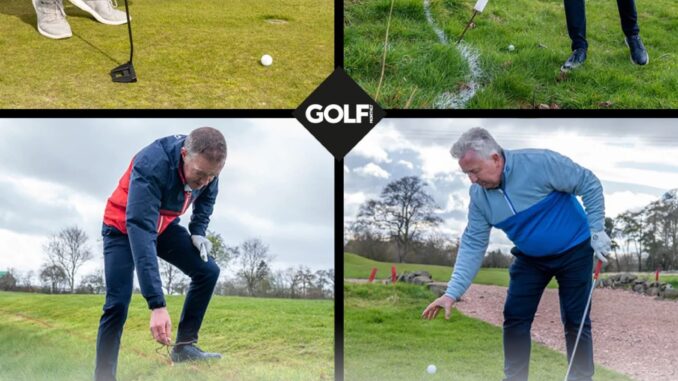
In golf, knowledge is as powerful as skill. But with 24 rules, multiple definitions, and countless sub-clauses, it’s no surprise that even experienced players often get things wrong. Some misconceptions come from outdated traditions, while others are simply myths passed around in the clubhouse like a well-worn putter. Here are the 10 most misunderstood golf rules—and the truth behind them.
1. You Must Keep the Flagstick Out When Putting
False.
Since 2019, under the updated Rules of Golf, you are allowed to leave the flagstick in the hole while putting without penalty. It’s entirely up to the player’s preference. Some believe it helps with alignment or distance control, while others still prefer to remove it.
Rule Reference: Rule 13.2a(1)
2. If Your Ball Moves on the Green, It’s Always a Penalty
Not always.
If your ball moves after you’ve already marked, lifted, and replaced it on the green—due to wind or no apparent reason—you simply put it back without penalty. If you caused it to move before marking it, that’s when a penalty may apply.
Rule Reference: Rule 13.1d
3. You Can’t Ground Your Club in a Bunker
Partially true.
You still can’t ground your club immediately behind or in front of the ball in a bunker when addressing it, but you can touch the sand elsewhere—like for balance or during a practice swing, as long as it’s not testing the sand.
Rule Reference: Rule 12.2b
4. You Always Drop a Ball Over Your Shoulder
Outdated.
That’s old-school. The correct method now is to drop the ball from knee height—standing upright and letting it fall naturally. Dropping from shoulder height can lead to a penalty or a re-drop.
Rule Reference: Rule 14.3b
5. You Can’t Repair Damage on the Putting Green
False.
You’re allowed to repair almost all damage on the green, including ball marks, spike marks, animal damage, and even scrapes caused by equipment—as long as it’s not natural wear.
Rule Reference: Rule 13.1c(2)
6. You Always Get Free Relief from a Cart Path
True—but with a catch.
You only get free relief if the cart path physically interferes with your stance or swing—not just because it’s in your line of play or nearby. Relief must be taken from the nearest point not closer to the hole.
Rule Reference: Rule 16.1a
7. You Can Take a Practice Swing in a Penalty Area
True.
You can take a practice swing in a penalty area (formerly called a hazard) and even ground your club—rules changed in 2019. But remember: if your ball moves during a practice swing, that’s still a penalty.
Rule Reference: Rule 17.1b
8. You Can’t Clean Your Ball During a Round
False.
You’re allowed to clean your ball any time you lift it—except when checking for identification or seeing if it’s embedded. On the green, cleaning is always allowed after lifting.
Rule Reference: Rule 14.1c
9. You Must Play a Ball If It’s Wedged in a Tree
Not always.
You may declare the ball unplayable (with a one-stroke penalty), even if it’s stuck in a tree. But if you can’t identify the ball, you may have to return to the previous spot—unless you can prove it’s yours (like with a visible mark or witnesses).
Rule Reference: Rule 19.2
10. You Can Tee Off in Front of the Tee Markers
False.
You must tee off within the designated teeing area—between and behind the markers, up to two club lengths. If you tee off outside that area in stroke play, it’s a two-stroke penalty and you must replay the shot.
Rule Reference: Rule 6.1b
Final Thoughts
Rules in golf can be tricky, but understanding them is key to enjoying the game—and avoiding unnecessary penalties. These ten myths continue to mislead golfers of all levels, but with the right knowledge, you can play smarter and more confidently. So the next time someone in your group insists on an outdated “rule,” you’ll be ready to set the record straight.
Leave a Reply